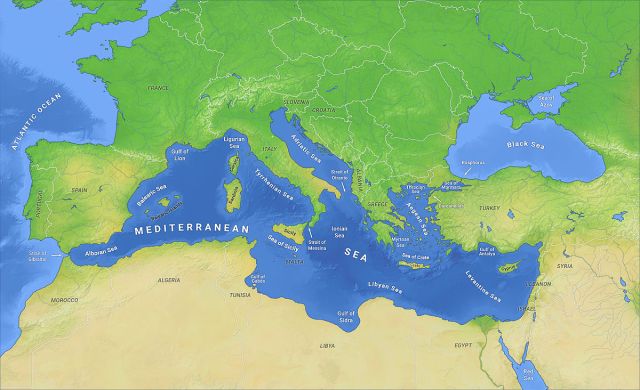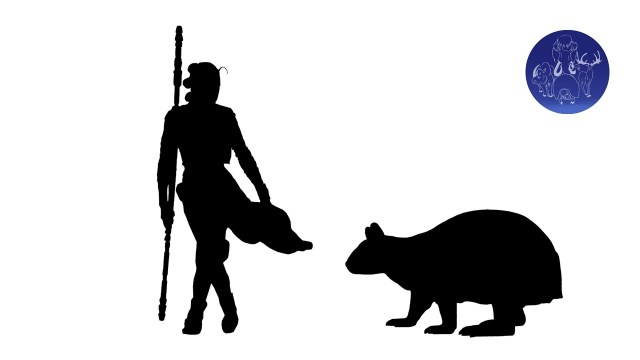‘And he said, “Very well, I will bless your bottom as it sticks out of the hole. Bottom, be strength and warning and speed for ever and save the life of your master. Be it so!” And as he spoke, El-ahrairah’s tail grew shining white and flashed like a star: and his back legs grew long and powerful and he thumped the hillside until the very beetles fell off the grass-stems. He came out and tore across the hill faster than any creature in the world.’
Dandelion telling the story of ‘The Blessing of El-ahrairah’
In Watership Down, 1972
And so, this is how rabbits told the story of how they came to be. Frith created rabbits for speed and cunning to escape from the ‘Thousand Enemies’. Many people have looked at the religious links in Watership Down, but recently the daughters of the author, Richard Adams, revealed the truth: “It’s just a story about rabbits.” And it is: a story about rabbits. Rabbits who have created a history of how they came to be on Earth. (It is a wonderful tale, and I will admit the animated film brought an awful lot of tears.)
Dandelion told many stories to Hazel, Fiver, Bigwig (oh, big, soft-hearted Bigwig) and the other rabbits of the warren. The story of Rowsby Woof and the Fairy Wogdog, The trial of El-ahrairah, and more helped the rabbits link the real world to their lives. If they had known about this beast, I imagine Dandelion would have told the The story of the King Rabbit.
The reality would have been even greater than Dandelion’s legend.

The Watership Down movie poster, with poor Bigwig in a snare. (Image Public Domain)
The story would, as a good tale does, start on an island. Islands are wonderful places for species to evolve into some extraordinarily strange shapes and sizes. With more food around and less predators, small animals tend to evolve to be bigger, and larger animals evolve to be smaller. We’ve seen this numerous times, with dwarf elephants and dwarf hippos on Crete, the giant dormouse, the dodo, the enigmatic mouse-goat, and even within our own Genus, with the ‘hobbit’ Homo florensiensis. It’s actually a real rule known as Foster’s rule: given enough time, and separated from mainland populations, large animals will shrink over time, and small animals will get bigger over time.
Around 6 million years ago the Mediterranean Sea was empty. Temperatures were hot, and there was no Strait of Gibraltar, which meant as the sea evaporated, it wasn’t replenished, so slowly it dried out. This large exposed land was connected to Europe Syria and North Africa, and thousands of animals lived here. Periodically, it was flooded, until the small Strait of Gibraltar, just 9 miles wide, opened up and let waters from the Atlantic Ocean flow in and keep the Mediterranean Sea, well, a sea.
Several islands formed as the Mediterranean was flooded. Here, many animals were separated from populations on the mainland, and separated they were free to evolve to their new environment. And here one rabbit would become a king.
Over a hundred years ago, Dorothea Bate explored Mediterranean islands in the search for fossils. She discovered many extant and extinct animals, and opened up a new world of island fauna never seen before. Since then researchers are still visiting the cave sites Bate explored and excavated. And they are discovering new things. At a site on the small island of Minorca, Spain, in the 1980s researchers excavated a new fissure at one of Bate’s original cave sites, and found remains of an unknown rabbit. It would be more than 30 years before it would be properly described for science. 30 years before the king rabbit would be unleashed onto the world.
When the fossils were examined it was clear that it was a new species of rabbit, Nuralagus rex (‘the Minorcan king of the hares’) . It was ten times larger than the European rabbit. Ten times larger. That’s a pretty big rabbit. The bones gave even more surprises. Looking at the skull in detail, it appears that Nuralagus had much smaller ears than rabbits you are familiar with today. The vertebrae showed that it’s back was much stiffer than other rabbits, suggesting strongly that this giant was a very poor runner, if it ran at all, and couldn’t hop. What’s more, the feet bones indicated that it wasn’t adapted to digging burrows. This giant rabbit (and it was a rabbit) couldn’t be more un-rabbit like.
Around 5 and a half million years ago, one population of rabbits became trapped as the Mediterranean Sea flooded. (Based on the morphology of the fossils, and the time periods the fossils have been found in, the more probable rabbit was Trischizolagus.) There was more food around, so this rabbit got bigger. With no predators, speed and large ears were lost throughout generations. We don’t know exactly when this rabbit vanished, and we need more fossils to help us understand when and why it became extinct. What we do know is that it was a rabbit never seen before, or since.
The Story of the King Rabbit is almost like something that Dandelion would tell to the group at Watership Down, and no doubt made Bigwig see a little of himself in the king. But it was real. And it lives on through the legacy of Dorethea Bate who opened up cave sites that are changing everything we thought we knew about the Mediterranean’s extinct creatures.
Written by Jan Freedman (@JanFreedman)
Further Reading:
Bover, P., et al. 2014. ‘The Late Miocene/Early Pliocene vertebrate fauna from Mallorca (Balearic Islands, Western Mediterranean): an update.’ Integrative Zoology. 9. pp.183-196. [Abstract only]
Bover, P., & Alcover, J. A. 2003. ‘Understanding Late Quaternary Extinctions: the case of Myotragus balearicus (Bate 1909).’ Journal of Biogeography. 30. pp. 771-781. [Abstract only]
Brown, P., et al. 2004. ‘A new small-bodied hominin from the Late Pleistocene of Flores, Indonesia.’ Nature. 431(7012). pp.1055-1061. [Full article]
Clauzon, G., et al. 1996. ‘Alternative interpretation of the Messinian salinity crisis: controversy resolved.’ Geology. 24. pp.363-366. [Full article]
Flynn, l., J., et al. 2013. ‘The Leporid Datum: a Late Miocene biotic marker.’ Mammal Review. 44(3-4). pp.164-176. [Full article]
Foster, J. B. 1964. ‘The evolution of mammals on islands.’ Nature. 202(4929). pp.234-235.
Ge, D., et al. 2013. ‘Evolutionary History of Lagomorphs in response to global environmental change.’ PLoS ONE. 8(4): doi.org/10.1371/journal.pone.0059668
Herridge, V. L., & Lister, A. M. 2012. ‘Extreme insular dwarfisms evolved in a mammoth.’ Proceedings of the Royal Society B: Biological Sciences. 279(4929). pp.234-235. [Full article]
Jalut, G., et al. 2000. ‘Holocene climatic changes in the Western Mediterranean, from south-east France to south-east Spain.’ Paleogeography, Paleoclimatology, Paleoecology. 160. pp.225-290. [Full article]
Manzi, V., et al. 2013. ‘Age refinement of the Messinian salinity crisis onset in the Mediterranean.’ Terra Nova. 25. pp. 315-327. [Full article]
Mas, G., et al., 2018. ‘Terrestrial colonisation of the Balearic Islands: new evidence for the Mediterranean sea-level drawdown during the Messinian Salinity Crisis.’ Geology. 46. pp.527-530. [Abstract only]
Quintana, J., et al. 2011. ‘Nuralagus rex, Gen. Et. Sp. Nov., An endemic insular giant rabbit from the Neogene of Minorca (Balearic Islands, Spain).’ Journal of Vertebrate Paleontology. 31(2). pp.231-240. [Full article]
Shindler, 2004. ‘Bate, Dorothea Minola Alice.’ Oxford Dictionary of National Biography. doi: https://doi.org/10.1093/ref:odnb/67163
Shindler, K. 2005. ‘Discovering Dorothea: the life of the pioneering fossil hunter Dorothea Bate.’ Harper Collins Publishers. [Book]
The Guardian 2019. True meaning of Watership Down revealed ahead of TV revival. [Online]




I would love to see one walk. It’d be so different.
Pingback: Diminishing giants | TwilightBeasts